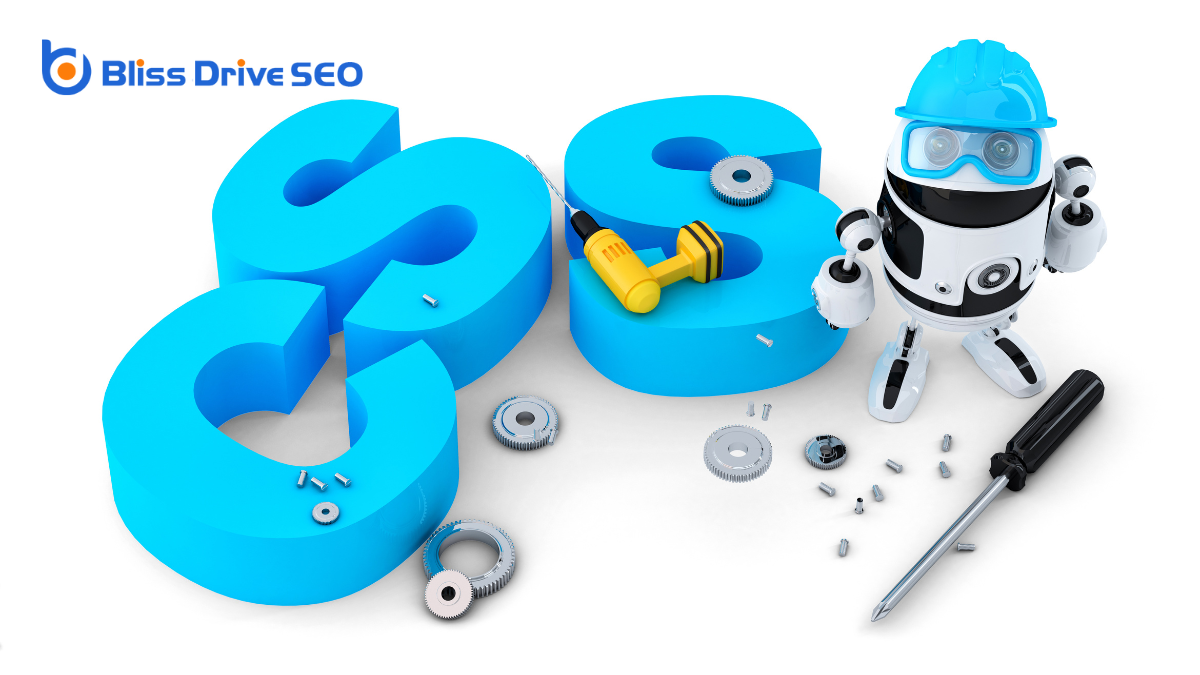Learn More About Us

When you think about web designing, you might initially consider the basics like HTML, CSS, and JavaScript. These are indeed the foundational languages that structure, style, and bring interactivity to a webpage. But don't stop there. The world of web development extends into frameworks and libraries like React and even backend languages such as PythonA high-level programming language widely used for data analysis and machine learning. and PHP, which play vital roles behind the scenes. Then, there's database interaction with SQL or ORMs. The question isn't just how many languages are used but how they interact and evolve in this ever-changing digital landscape. Curious about what else is out there?
When you immerse yourself in web design, you can't ignore the importance of core web languages. These foundational languages are essential for building any website.
HTML, or HyperText Markup Language, is your starting point. It's responsible for structuring content on the web. Think of it like the skeleton of a website, providing the basic framework that you'll build upon. Without HTML, a webpage wouldn't even exist.
Next, you have JavaScript, which adds interactivity and dynamic features to your site. Imagine a webpage that can respond to user actions, like clicking a button or filling out a form; that's JavaScript at work. It plays a significant role in enhancing user experience and functionality.
Finally, there's the Document Object Model (DOM), which might seem complex, but it's vital. The DOM is an interface that allows JavaScript to change the document structure, style, and content.
It's like a bridge that connects HTML and JavaScript, enabling your website to be more interactive.

Styling your website with CSS, or Cascading Style Sheets, transforms the basic structure into an appealing and visually engaging experience. CSS allows you to control the presentation layer of your site by letting you define styles for various HTML elements. You can change colors, fonts, spacing, and layout, ensuring your website looks exactly how you want it to.
By separating content from design, CSS makes it easier to maintain and update your site without altering the HTML structure.
You'll find CSS incredibly powerful because it gives you the ability to create responsive designs. This means your website will adapt to different screen sizes, providing a seamless experience whether users are on their phones, tablets, or computers. CSS media queries, for example, help you apply different styles based on device characteristics.
Moreover, CSS supports animations and changes, giving your website a modern and dynamic feel. You can animate elements to fade in, slide, or rotate, adding an extra layer of interactivity.
Understanding CSS's box model, which involves margins, borders, padding, and content, is essential, as it helps you precisely control the layout and spacing of elements on your pages.
Bringing your website to life with Interactive JavaScript can transform static pages into engaging, dynamic experiences. By using JavaScript, you can add interactivity like animations, form validations, and responsive content updates without reloading the entire page. This not only enhances user experience but also makes your website feel more alive and functional.
To get started, consider the following elements to make your JavaScript efforts effective:
While JavaScript enhances your website's front end with interactivity, a robust backend is the backbone that powers it. The backend handles server-side tasks, ensuring your site functions smoothly. Choosing the right language for this job depends on your project's needs and your personal preferences.
Python is a popular choice. It's known for its readability and efficiency, making it a favorite among developers. With frameworks like Django and Flask, Python simplifies backend tasks and speeds up development.
PHP is another widespread option, especially for content-driven sites. It's been around for a while, and it integrates seamlessly with databases and HTML. WordPress, a huge part of the internet, is built on PHP.
Java remains a powerhouse in backend development. Its portability and scalability make it ideal for large enterprise applications. With the Spring framework, Java enhances flexibility and speed in development.
Node.js, using JavaScript for server-side logic, bridges the gap between the frontend and the backend. It's great for real-time applications due to its non-blocking architecture.
Ruby, with its elegant syntax, powers Ruby on Rails. It prioritizes convention over configuration, speeding up the development process.
Each language has strengths, so consider your project's requirements when making a choice.

When working with databases in web design, you'll encounter popular languages like SQL and MongoDB that help you interact with your data efficiently.
It's essential to choose the right tool based on your project's needs, considering factors like data structure and scalability.
Don't forget to prioritize database security best practices to protect your data from potential threats.
Databases are the backbone of dynamic web applications, and interacting with them efficiently requires a solid understanding of popular database interaction languages. These languages help you communicate with your database to store, retrieve, and manipulate data.
Among the top contenders is SQL (Structured Query Language)A programming language used for managing and manipulating relational databases., which's widely used for its simplicity and flexibility in dealing with relational databases. SQL helps you perform complex queries and manage databases with ease.
Another essential language is PHP, which is often paired with SQL. PHP excels in server-side scripting and seamlessly integrates with databases for dynamic contentEmail content that changes based on the recipient's preferences or behavior. delivery. Its popularity lies in its open-source nature and ease of embedding within HTML.
For those working with Node.js, JavaScript-based solutions like Sequelize or Mongoose are popular. Sequelize is an ORM (Object-Relational Mapping) that makes it simpler to work with SQL databases, while Mongoose is perfect for MongoDB, a NoSQL database.
Here's a quick list to help you remember these tools:
Mastering these languages will enhance your web applications' functionality and responsiveness.
Selecting the right tool for database interaction is essential for building efficient and scalable web applications. When you're choosing a database interaction tool, consider your project's specific needs. Are you dealing with large datasets or complex queries? Tools like SQL and its variations (MySQL, PostgreSQL) are robust options for relational databases. They're great for structured data and can handle complex queries effectively.
If your application requires flexibility and scalability, look into NoSQL databases like MongoDB or CouchDB. These are perfect for unstructured data and can easily scale horizontally. They don't require a fixed schema, which offers adaptability as your project evolves.
Another factor is integration with your existing tech stack. Make sure the tool you select works seamlessly with your current programming languages and frameworks. For instance, if you're using Node.js, consider using a database tool like Mongoose, which simplifies MongoDB interactions.
Finally, think about the learning curve and community support. Choosing a tool with a strong community means you'll have access to a wealth of resources, tutorials, and forums. This can greatly reduce the time needed to troubleshoot issues and implement best practices.
Protecting your database is essential in guaranteeing the security and integrity of your web applications. As you explore web designing, you must prioritize database security to safeguard sensitive data from potential breaches.
Start by adopting best practices that can fortify your database against unauthorized access and vulnerabilities.
First, use strong, unique passwords for database accounts and change them regularly to prevent unauthorized entry. It's imperative to control access by granting permissions only to those who truly need it. Implementing encryption for data at rest and in transit adds an extra layer of security, making it harder for attackers to exploit your data.
Regularly update and patch your database management systems to protect against known vulnerabilities. Outdated systems are often targeted by cybercriminals, so staying current is essential.
Here are key practices for maintaining database security:
When diving into the world of web design, you'll quickly encounter frameworks and libraries, essential tools that streamline and enhance your development process.
Frameworks provide a structured foundation for building web applications, offering pre-written code and guidelines. This saves you time and guarantees consistency across your projects. Popular frameworks like React, Angular, and Vue.js are widely used in the industry. Each has its strengths, such as React's component-based approach or Angular's extensive ecosystem.
Libraries, on the other hand, offerThe specific product or service being promoted by affiliates. collections of pre-written code that help you perform specific tasks more efficiently. Instead of reinventing the wheel, you can leverage libraries to handle complex functions like data manipulation or animation.
For instance, jQuery simplifies HTML document traversal and event handling, while D3.jsA JavaScript library for producing dynamic, interactive data visualizations in web browsers. is perfect for creating dynamic data visualizations.
As web design continues to evolve, emerging technologies are reshaping the landscape in exciting ways.
You're likely to encounter concepts and tools that push the boundaries of what websites can achieve. Staying up-to-date with these innovations not only enhances your design skills but also helps you create more engaging user experiences.
Consider these emerging web technologies:

Choosing the right languages for web design is vital, as it directly impacts the functionality and aesthetics of your site. When selecting languages, consider your project's requirements. Do you need a static or dynamic site? HTML and CSS are fundamental for structure and style, but for interactivity, JavaScript is essential. If you're building a complex application, languages like Python, Ruby, or PHP might be more appropriate.
Think about your skill level. Are you comfortable with programming, or are you just starting out? Some languages, like HTML and CSS, are more beginner-friendly, while others, like JavaScript or PHP, may require a steeper learning curve. Choose languages that align with your expertise and willingness to learn.
Consider the compatibility and integration of languages with various platforms and devices. Make certain that the languages you choose can deliver a seamless experience across desktops, tablets, and smartphones.
Additionally, the community support and resources available should be evaluated. A language with a strong community can provide valuable assistance and tools.
Lastly, think about scalability. Will the languages you choose support future updates and growth? Prioritizing these factors will guide you in making informed decisions that enhance your web design projects.
In web designing, you're not just sticking to one language; you utilize a mix of HTML, CSS, and JavaScript to create dynamic and visually appealing sites. On the backend, you might choose from Python, PHP, or Node.js, enhancing functionality through database tools like SQL. Frameworks like React streamline your work while emerging technologies keep you on your toes. Ultimately, your language choice hinges on project needs, scalability, and personal expertise, ensuring your site stands out.
